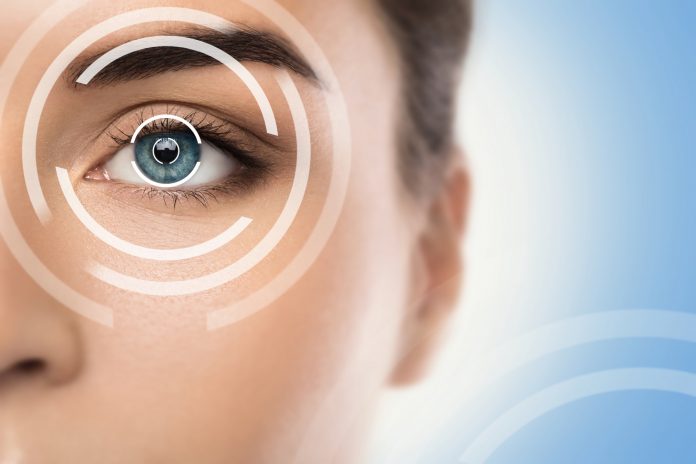Dry eye is a common ailment caused when tears do not produce adequate moisture. Every time a person blinks it covers the eye in a layer of tears and a thin layer of lipids that preserve the film over the eyes keeping them lubricated.1
To preserve eye health and comfort the film needs to remain intact between every blink. When this function is impaired, through not producing enough tears or through the tears not remaining in place between blinks, this causes dry eye and over time can damage the surface of the eye.1
Dry eye is common in older people, although can affect anyone and while it cannot be cured there are methods to alleviate the discomfort and relubricate the eyeball. Often when patients experience dry eye the pharmacy is the first place, they go to seek advice to manage the condition.
Causes of dry eyes
Dry eyes can be caused by a variety of reasons. However, certain factors increase your risk:
- As we age our tear production reduces meaning dry eyes are more common in older people.2
- Women two times more likely to develop dry eye disease.3
- Wearing contact lenses can limit oxygen flow interfering with tear production.
- Using the computer or screens for a prolonged period can interfere with blinking patterns.2
- Some medications.
- Certain autoimmune diseases increase the likelihood of dry eyes.2
- Being exposed to wind, smoke, or dry air.2
Pharmacy’s role
Wizard Professional Services, Chief Pharmacist, Jeanette Drury says that pharmacy plays an important role in managing dry eyes.
“Dry eye is common and can affect anyone and Pharmacy is often the first port of call for patients experiencing this uncomfortable condition,” Ms Drury said.
“A pharmacist will assess the symptoms and ask questions to help determine the cause. They can offer suitable solutions for everyday conditions such as hay fever or conjunctivitis and refer patients to their GP for more serious conditions.”
OTC management
Dry eyes can be managed through a range of OTC products, and all should be recommended based on the individual needs of the patient. “There are a range of artificial tears, gels, and ointments to help manage the symptoms of dry eye. A Pharmacist can recommend and advise on the best type for a patient’s individual needs,” Ms Drury said.
Patient use
“Artificial tears, gels or ointments come in bottles, single vials or tubes,” Ms Drury said, advising the following steps will help patients to use these products:
- Firstly – wash your hands to prevent the spread of germs.
- Tilt your head back, look up and pull down your lower eyelid with your finger.
- With the other hand, position the bottle over your open eye and squeeze out the correct number of drops or gel drops recommended by your Pharmacist or GP.
- To avoid contamination, do not touch the tip of the bottle or let it touch your eye.
- Close your eye and keep it closed for a little while.
- Avoid rubbing your eyes.
Ms Drury says it is important to remind patients “that thicker gels or ointments may cause blurred vision for a short period of time”.
Additionally, some medications can contribute to dry eye symptoms. “If you think your medication may be causing dry eye symptoms, talk to your pharmacist or GP. Some prescribed medicines can contribute to dry eye e.g., antidepressants, oral contraceptives, and antihistamines. It is important that you do not stop taking any prescribed medicine without getting medical advice from your health professional first,” she said.
GPs and pharmacists are appropriate health professionals to manage mild dry eyes. However, for dry eyes that cause severe symptoms such as pain, it is important to refer the patient to an optometrist to investigate the condition further.3
References:
- Better Health. ‘Dry eye’.2021. <vic.gov.au/health/conditionsandtreatments/dry-eye#what-is-dry-eye>.
- Health Direct. ‘Dry eye disease’. 2022. <gov.au/dry-eye-disease>.
- Quan Findlay and Kate Reid. ‘Dry eye disease: when to treat and when to refer’. Australian Prescriber 41(5). <ncbi.nlm.nih.gov/pmc/articles/PMC6202299/>.
This feature was originally published in the October issue of Retail Pharmacy magazine.








